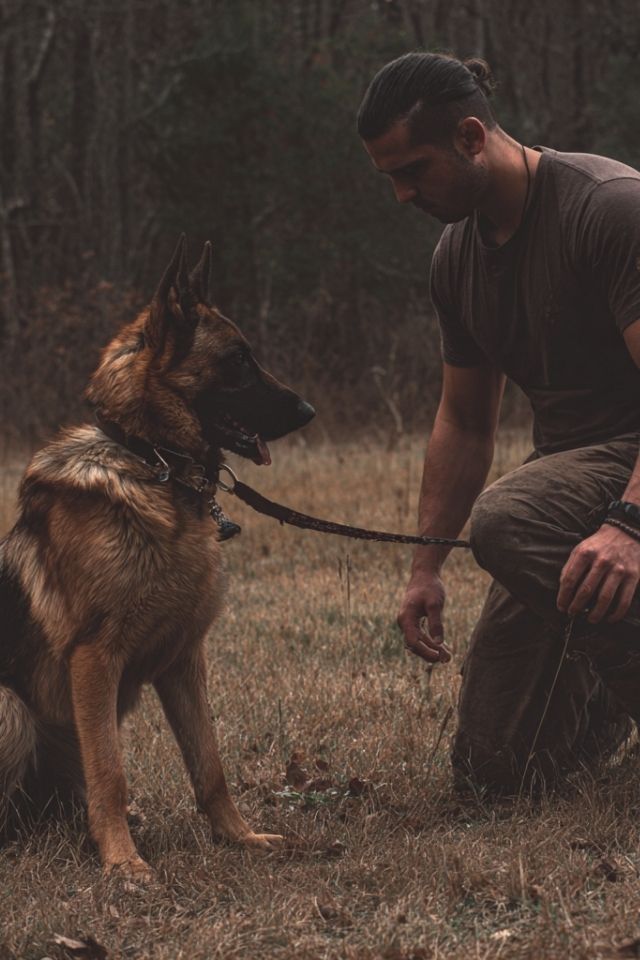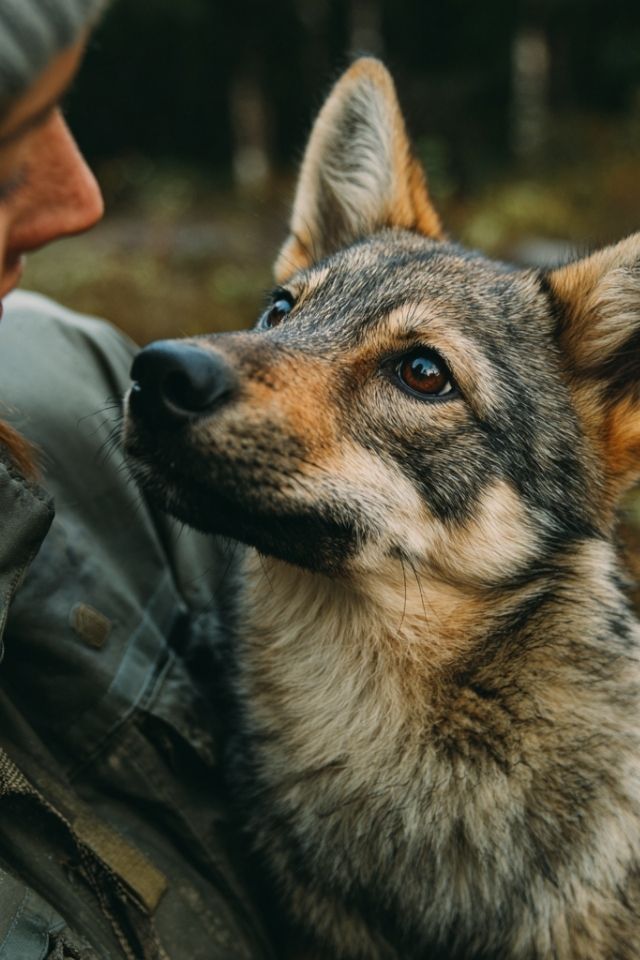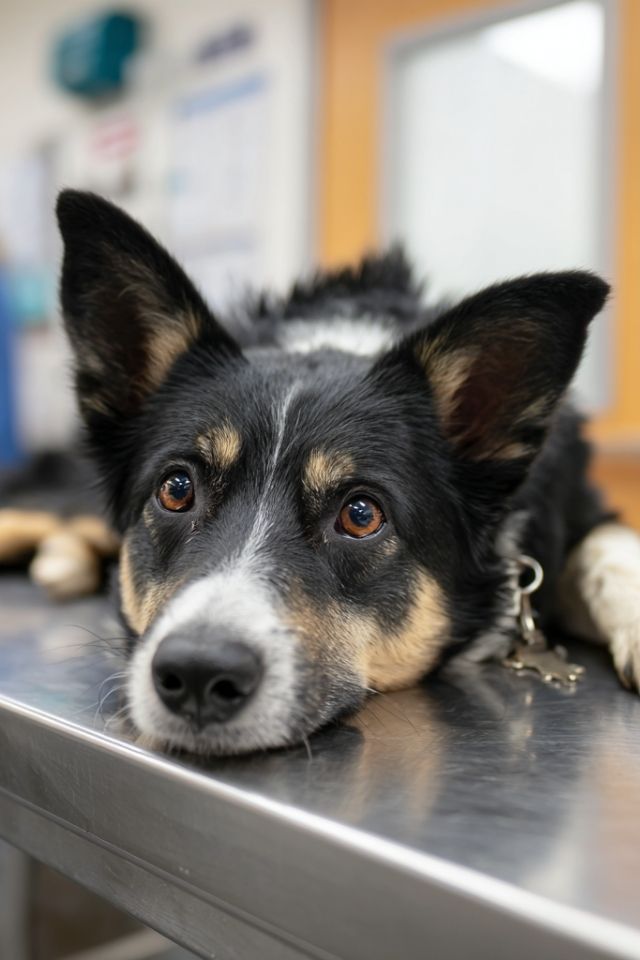The Morning That Changed Everything
Picture this: Morning light streams through your kitchen window as you call your companion for breakfast. But instead of the usual enthusiastic response, you’re met with a distant stare. Your voice rises, frustration creeping in as you repeat the command. They hear you – you can see it in the slight ear twitch – yet they remain unmoved, as if an invisible barrier stands between your words and their response.
This isn’t defiance. This is a soul crying out through the only language it knows – behavior.
In that moment of disconnection, what you’re witnessing isn’t stubbornness or a breakdown in your NeuroBond. It’s the silent struggle of a brain starved of the very building blocks it needs to translate love into action. Your dog wants to respond, yearns to please, but their depleted nervous system simply cannot bridge the gap between intention and behavior.
For too long, we’ve labeled these moments as training failures. We’ve called our dogs stubborn, difficult, or worse. But what if every act of “disobedience” is actually a message written in the language of nutritional need? What if the invisible leash that should connect your souls has frayed not from lack of love, but from lack of omega-3s?
Reading the Silent Language of Need
When the Body Speaks What the Mouth Cannot
Every morning, Sarah watched her Border Collie, Luna, perform the same troubling ritual. The once-brilliant agility star would approach her food bowl, circle it three times, then walk away. Twenty minutes later, she’d return, eat frantically, then pace the house for an hour. Sarah tried everything – different schedules, new bowls, even hand-feeding. Nothing worked.
It wasn’t until a chance conversation with a holistic veterinarian that Sarah learned Luna’s behavior painted a perfect picture of glucose instability. The circling spoke of a brain trying to regulate itself, the frantic eating revealed desperate hunger, and the pacing? That was a nervous system caught in metabolic chaos, unable to find its equilibrium.
This is how our dogs communicate their deepest nutritional needs – through a vocabulary of actions we too often misread. The Labrador who “suddenly forgot” years of training might be experiencing the fog of B-vitamin depletion, where memories become shadows and commands echo in a mind too exhausted to respond. The rescue who flinches at every sound isn’t necessarily traumatized – they might be navigating the world with a nervous system stripped of magnesium’s calming embrace.
Watch closely, and you’ll see the stories everywhere:
- The twilight confusion of a senior dog might whisper of omega-3 deficiency
- Excessive paw licking could be anxiety manifesting from zinc depletion
- That “selective hearing” at the park might reveal a brain struggling to form memories without adequate DHA
- The inability to settle after exercise often speaks of blood sugar crying for stability
The Alchemy of Connection
How Nutrients Weave the Invisible Leash
Within your dog’s brain, an elegant dance unfolds every second. Amino acids transform into serotonin, the molecule of contentment. Tyrosine becomes dopamine, the spark of joy and motivation. This isn’t just chemistry – it’s the biological foundation of your NeuroBond, the invisible thread that allows Soul Recall to transcend distance and distraction.
Consider Marcus and his German Shepherd, Atlas. For months, their evening training sessions had become battles of will. Atlas would start strong, then gradually disconnect, his eyes growing distant, his responses delayed. Marcus felt their bond weakening, that precious invisible leash stretching thinner with each failed session.
The transformation began with sardines. Simple, unassuming sardines, rich with omega-3s. Within weeks, Atlas’s eyes began to hold Marcus’s gaze longer. Commands that had echoed in emptiness began landing in a mind capable of receiving them. By week six, their evening sessions transformed from struggles into dances of mutual understanding. The invisible leash hadn’t been broken by lack of love – it had been starved of the fatty acids that allow neurons to speak to each other.
This is the profound truth: every nutrient we provide either strengthens or weakens the biological infrastructure of connection. Magnesium doesn’t just calm anxiety; it creates the neurological conditions for trust. B-vitamins don’t just provide energy; they build the pathways through which love travels from heart to action.
The Feast of Transformation
Nourishing the Roots of Behavior
In the wild, wolves don’t suffer from selective hearing or training regression. They consume whole prey – organs rich with B-vitamins, bones full of minerals, brain tissue packed with DHA. Every meal is a symphony of nutrients orchestrated by millions of years of evolution. Our domestic companions, eating from bags of processed convenience, often receive the nutritional equivalent of a single, repetitive note.
The path back to behavioral harmony doesn’t require complicated protocols. It begins with understanding that every meal is an opportunity to strengthen your NeuroBond. Simple additions can create profound changes:
When you crack an egg into your dog’s bowl, you’re not just adding protein. You’re providing choline, the architect of memory, allowing yesterday’s training to become tomorrow’s habit. Those blueberries you share aren’t just treats – they’re antioxidants protecting the very neural pathways that carry your voice to your dog’s heart.
A client once told me about the moment she understood this truth. She’d been struggling with her anxious Cocker Spaniel, Oliver, for two years. Trainers, medications, thunder shirts – nothing helped. Then she began adding bone broth to his meals, rich with glycine and minerals. Two weeks later, during a thunderstorm that would typically send Oliver into panic, she found him sleeping peacefully by her feet. “It wasn’t training that saved him,” she said, tears in her eyes. “It was soup.”
This is the miracle hidden in plain sight: behavior isn’t just trained, it’s fed.
The Sacred Timeline of Healing
Patience as Medicine
Nutritional healing doesn’t follow our human timelines. It moves at the pace of cellular regeneration, of neural pathways slowly rebuilding, of depleted stores gradually refilling. This isn’t instant transformation – it’s metamorphosis, and like all metamorphosis, it requires patience and faith.
Week by week, the changes whisper before they shout. First, you might notice your dog’s eyes seem clearer, holding your gaze a moment longer. Their sleep becomes deeper, their waking calmer. By week four, commands that once required repetition land softly the first time. By week eight, you realize you haven’t seen that anxious pacing in days.
Sometimes the changes are so gradual that you only recognize them in retrospect. One morning you realize your reactive dog passed three triggers on yesterday’s walk without incident. Your “slow learner” suddenly grasps a complex command. Your senior dog initiates play for the first time in months. These aren’t miracles – they’re the natural result of a brain finally receiving what it needs to function as nature intended.
The Invisible Becomes Visible
Recognizing Your Dog’s True Nature
There’s a moment in every nutritional healing journey when the fog lifts, and you meet your dog – perhaps for the first time. Beneath the anxiety, beyond the “stubbornness,” past the reactivity, their true nature emerges. This is who they always were, waiting beneath layers of deficiency and depletion.
Jenny described this moment with her Beagle, Copper: “It was like someone turned on a light inside him. For three years, I thought I had a difficult dog. Turned out I had a brilliant dog whose brain was starving. The day he performed a perfect recall at the dog park – the same park where he’d ignored me hundreds of times – I sat in my car and cried. Not from frustration this time, but from joy and a little bit of grief for all the time we’d lost.”
This revelation carries both celebration and responsibility. Once you understand that behavior and nutrition are inseparable, you can never again dismiss “disobedience” as simple defiance. Every behavioral challenge becomes an invitation to investigate deeper, to ask not “why won’t you listen?” but “what do you need?”
The Call to Conscious Nourishment
Your Role as Guardian of the NeuroBond
As you read these words, your dog rests somewhere nearby, their behavior telling a story in a language you’re now beginning to understand. That restless energy might be magnesium calling. The forgotten command could be omega-3s depleting. The anxious whine might be B-vitamins crying out.
You hold the power to rewrite their story, one meal at a time. Not through stricter training or louder commands, but through conscious nourishment that honors the biological foundation of your bond. This isn’t about perfection – it’s about awareness, about seeing behavior as communication rather than defiance.
The invisible leash that connects your souls is woven from more than love alone. It’s strengthened by every nutrient that supports your dog’s capacity to receive and return that love. When you feed their brain, you feed your bond. When you nourish their nervous system, you nurture the very roots of your relationship.
Tomorrow morning, when you call your companion, pause and truly observe their response. Are they connecting with you fully, or is something invisible standing in the way? The answer might not be in your training technique or your leadership style. It might be waiting in their bowl, ready to transform not just their behavior, but the very quality of your connection.
Your dog’s soul speaks through behavior. The question is: are you fluent enough in the language of nutrition to understand what they’re trying to tell you? 🐾






